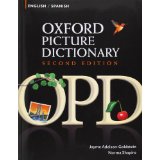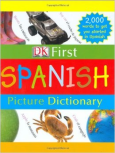If you are studying Spanish, you may find a picture dictionary is helpful, in addition to a regular Spanish/English dictionary. Picture dictionaries are organized by topics, not alphabetically. They are handy when you want to look up more than one item in the same category, such as foods, and have the advantage of illustrating words you may not know, like what an elm tree looks like, for instance. There is an alphabetical index in the back.



There are many good, basic picture dictionaries. The one I am most familiar with is the Oxford Picture Dictionary English/Spanish. Some topics covered are everyday language, people, housing, food, clothing, health, community, transportation, work, areas of study, plants, animals and recreation. It is about 300 pages long—not a small book!
Some picture dictionaries are made for children but are also suitable for adult learners. DK First Picture Dictionary: Spanish offers phonetic pronunciation and McGraw Hill’s Spanish Picture Dictionary also includes it in the back of the book. If you know how to pronounce the letters in Spanish, you shouldn’t need the phonetic pronunciation, and there are many other well-illustrated Spanish picture dictionaries.

In addition, there are even more detailed and technical picture dictionaries, such as Merriam-Webster Spanish-English Visual Dictionary. (1,152 pages) The difference is that the above basic picture dictionaries, for example, will offer two pages with the names and structures of common flowers, and the detailed one will give twenty pages of every flower imaginable and detailed drawings and labels of each structure, such all the parts of a seed. For beginners, the basic one is more than enough.







